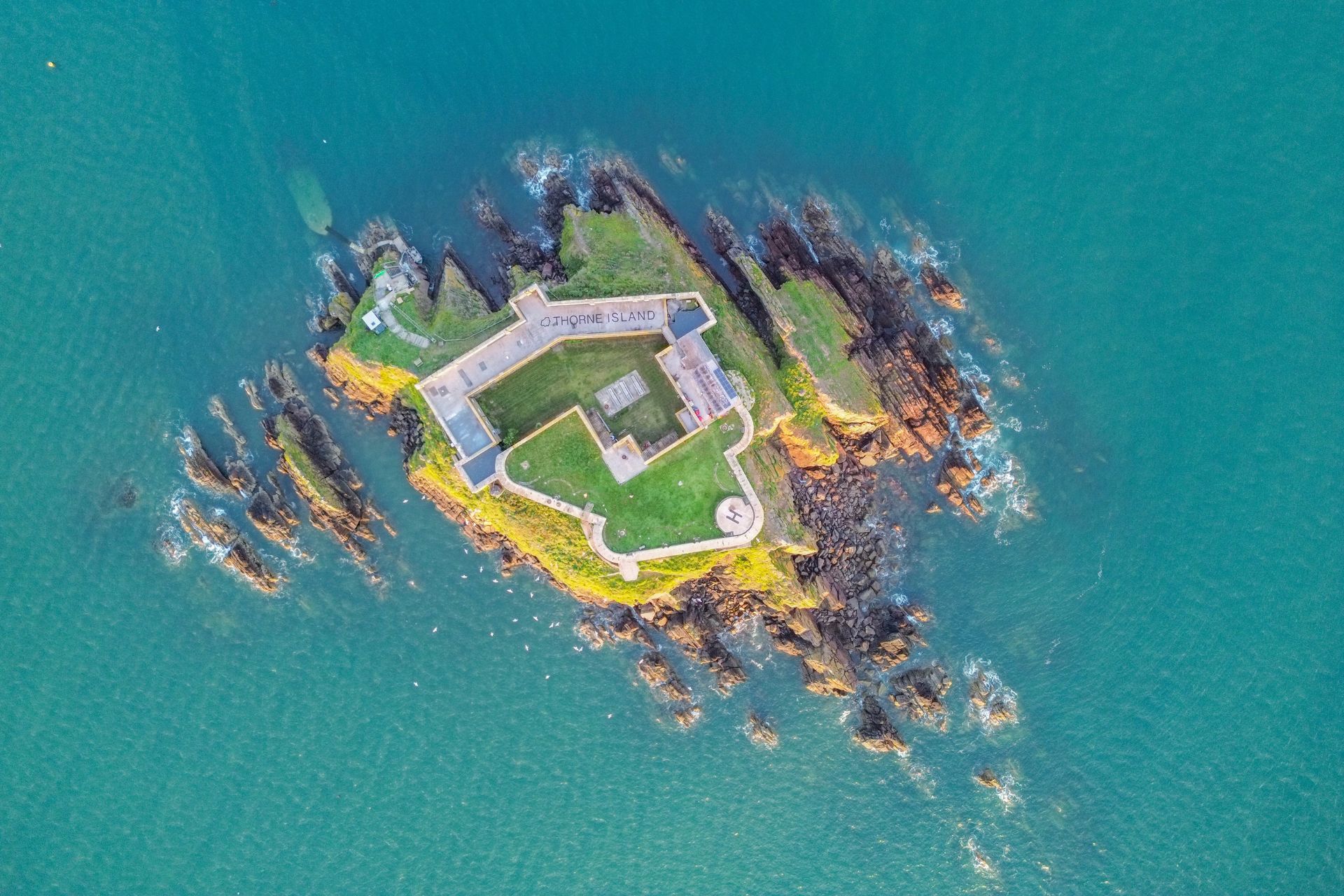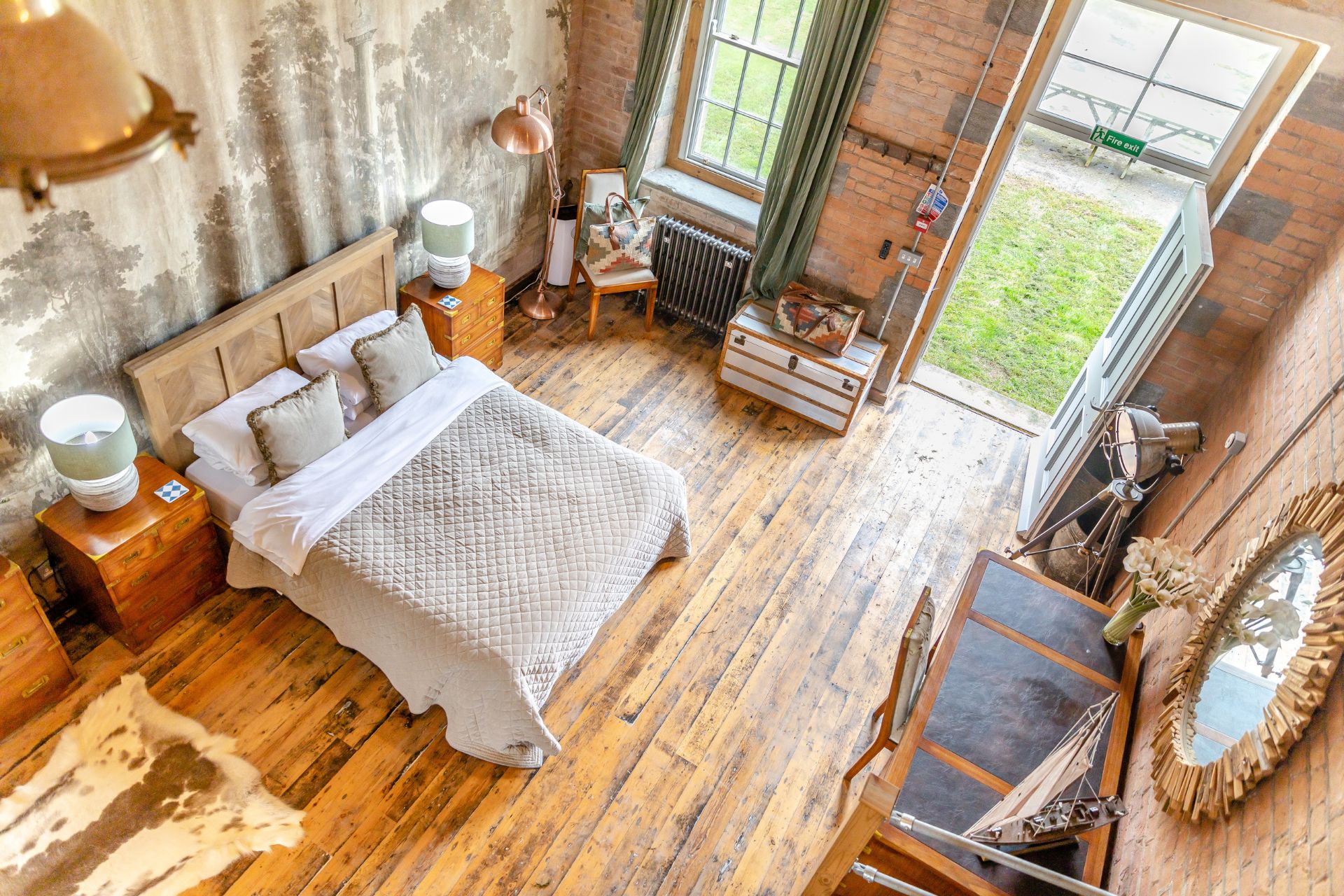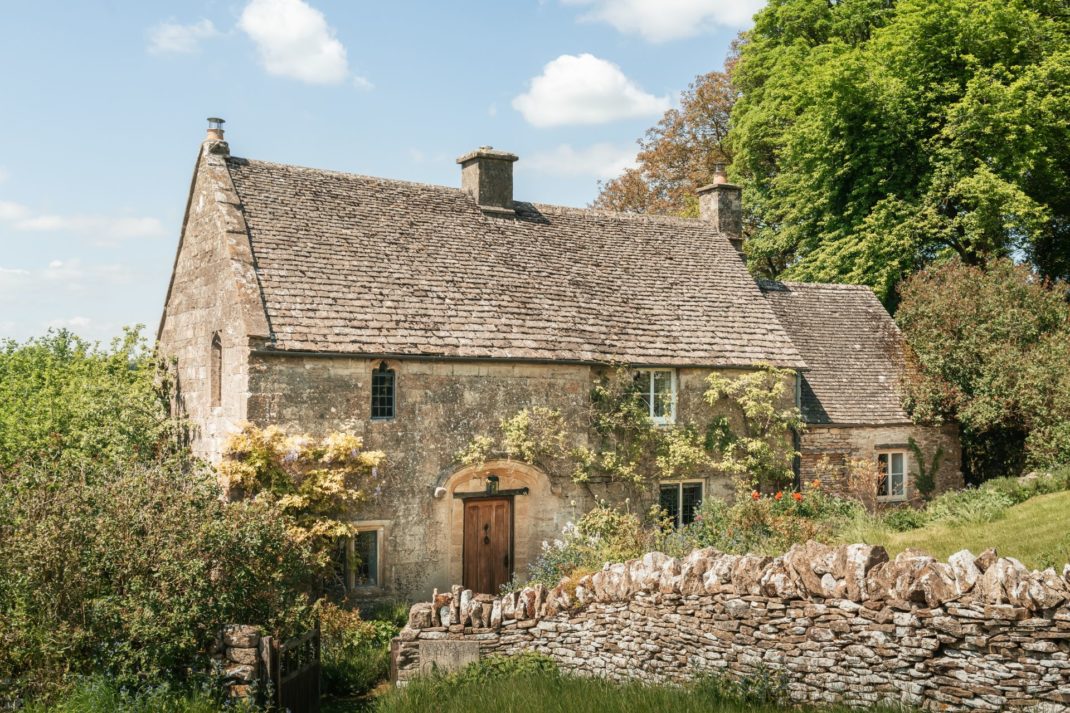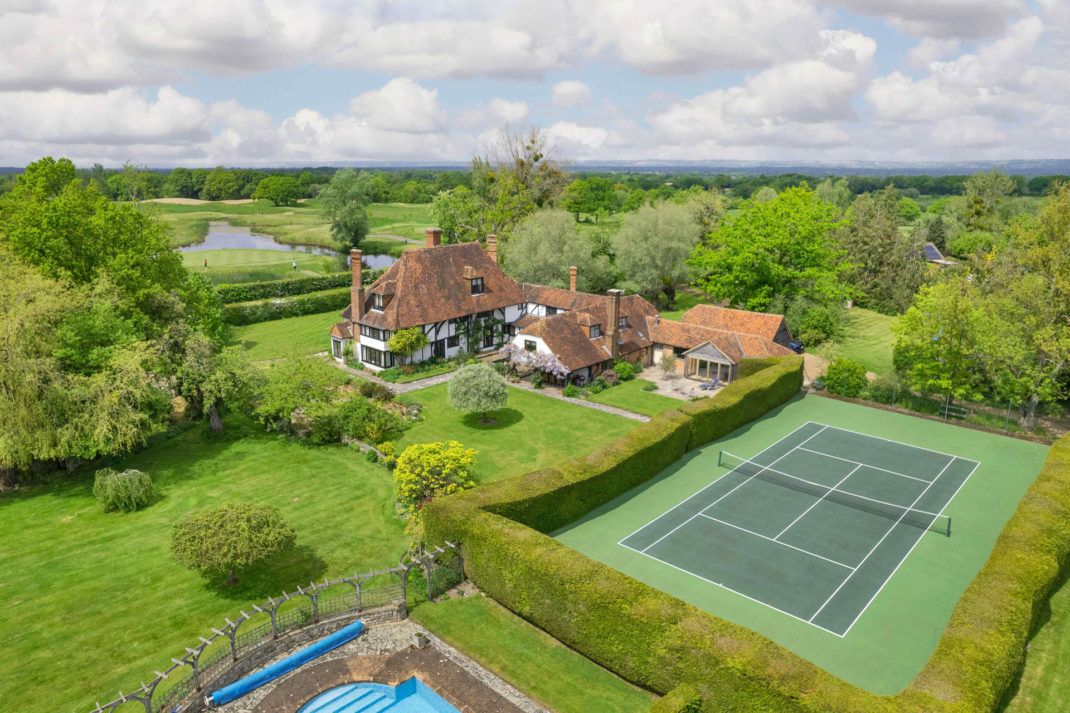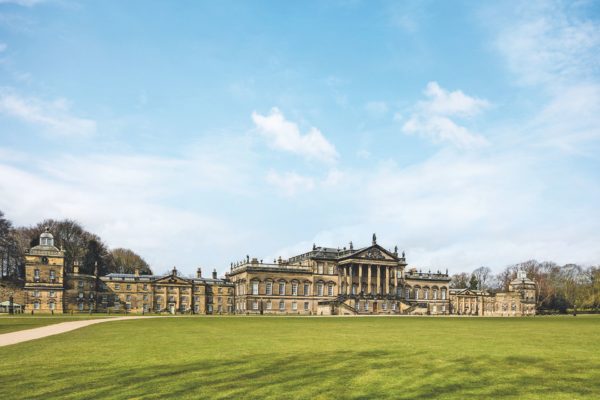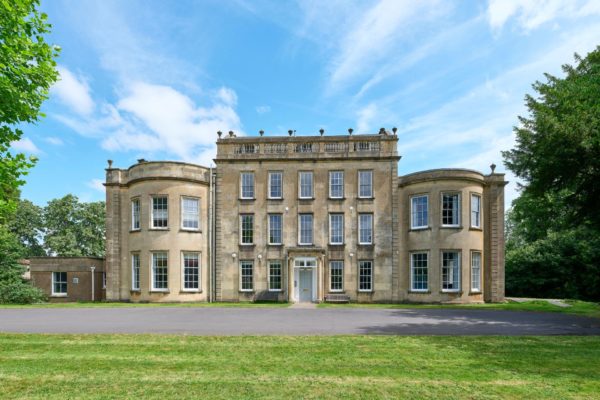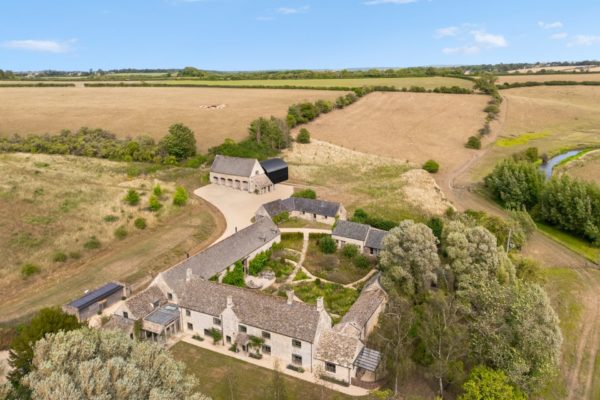Is This Private Island Napoleonic Fort The Ultimate Party Pad?
By
5 months ago
'There’s lots of forts falling into the sea – you’ve saved one'
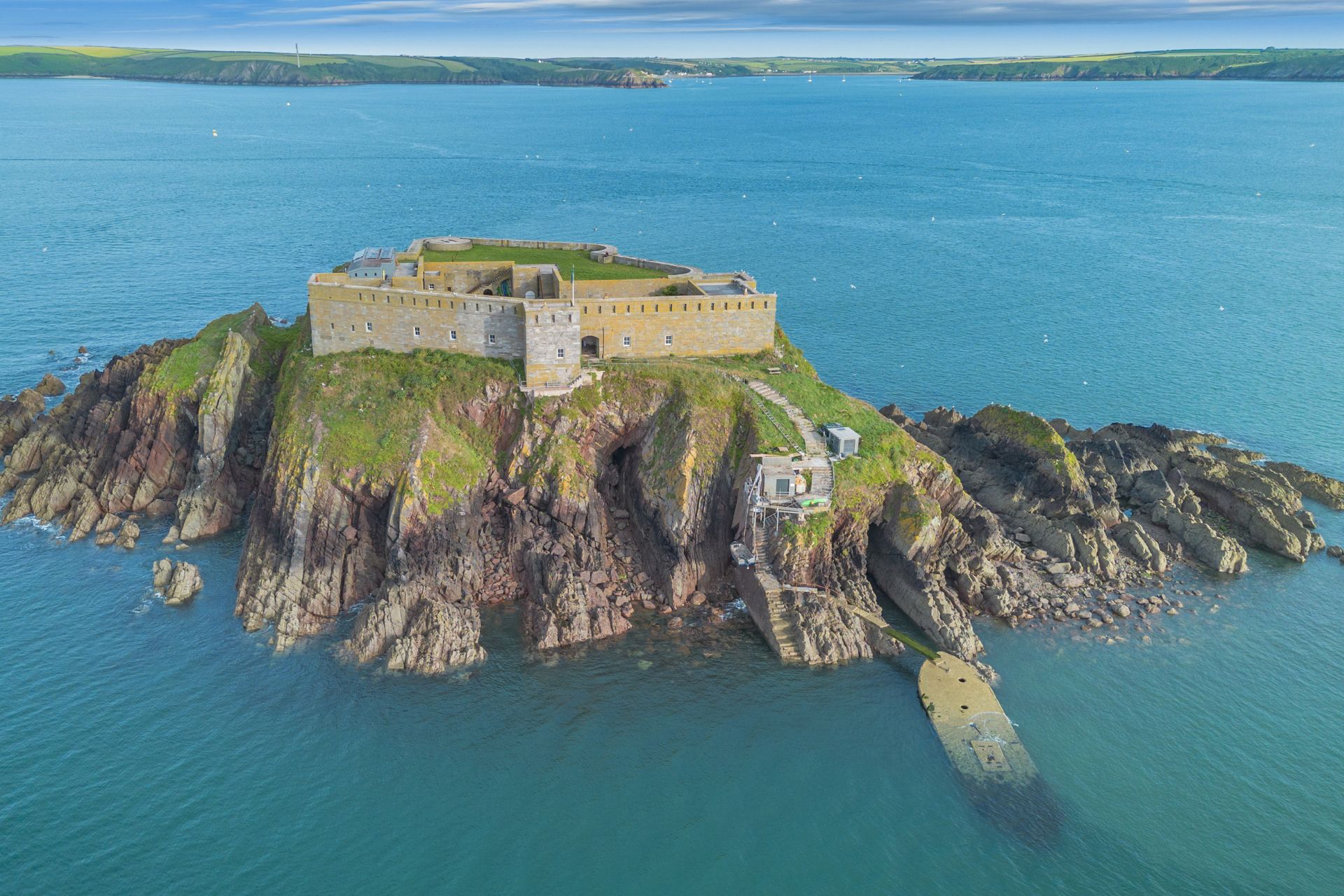
A military base, a hotel, the site of shipwrecks and tightrope walkers: this private island has seen it all. We chat to Thorne Island’s current owner, Mike Conner, to discover what this former fort has in store for the future.
Discover This Restored Napoleonic Fort On Its Own Private Island
Cleaning out your gutters is a task we all dread, but when Mike Conner faces it, he is not simply contending with the usual muck and leaves: his drain pipes are chockablock with shrimp. Flung up by the dramatic crash of the waves off the coast of Thorne Island, the sea-dwelling critters tumble back down to Conner’s roof drains – where he is left to claw them out.
Luckily for Conner, curtain twitching neighbours watching him perform this humbling task are no issue. His property is the one and only residence on Thorne Island, a Napoleonic fort perched just off the coast of Pembrokeshire. And while the private island is now on the market for £3 million, let us not forget the years-long £2 million restoration project that came before…
The History
Originally built in the 1850s, Thorne Island fort was created to guard the Royal Dockyards at Milford Haven on the south-west coast of Wales. Then-PM Lord Palmerston was keen to enhance Britain’s coastal defence network to ward off any attacks from the French during Emperor Napoleon III’s expansion. Designed to house 100 men, the fort was built with local granite and equipped with a battery of seaward-facing guns.
But as with any fort, its military role faded over time. Converted into a hotel in 1947 and sold in 1999, plans to transform Thorne Island into a five-star resort eventually failed, and it was sold again in 2001, 2011 and 2016. With no one quite sure how to care for the fort, it was left to slowly deteriorate into the waves.
That is until 2017, tech entrepreneur Mike Conner would fatefully stumble across a YouTube video showcasing a waterlogged, windowless pile of stone that was succumbing to the sea. Against all better judgement, he decided to buy it.
The Restoration
Originally a design and technology teacher before becoming a software engineer, Conner has always had a love for restoration and was keen to complete a project of his own. With a blank canvas at his disposal, Thorne Island – and all its myriad challenges – felt like the perfect pick. Seeing it as a one-in-a-lifetime opportunity, what followed can only be described as a logistical feat.
‘That’s what makes the place really stimulating,’ he says with a laugh. ‘By 40, you’ve seen quite a lot of stuff and think you know it all. It’s quite nice to be a four-year-old again and learn a whole bunch of things very quickly. That was the fun of it.’
With little knowledge of what was to come, he confesses he ‘completely underestimated the complexity of the environment and what was involved’. Relying on a helicopter to transport supplies and equipment, the initial haul took 350 trips across a span of two days – bringing everything onto the island from air source heat pumps to stone and topsoil. With around 200 tradespeople across the project’s length and a dedicated team of builders by his side, the main crew lived in the original barracks for four years to bring Conner’s grand vision to life.
The living situation? ‘Horrible,’ he says. ‘I don’t know how they did it. I was constantly worrying about them.’ At the time there were no windows, no running water, and certainly no warmth. ‘There are people who don’t get it at all,’ Conner explains, ‘and there are people who would give their right arm to be involved in a project like that.’
Restoring a Grade II* listed property with such a rich history meant Conner had to work alongside a conservation officer – and many compromises had to be made. Concerned with being viewed as an ‘unqualified person from the software industry’ and frustrated by the lack of freedom, the two were eventually able to work effectively to protect this Welsh monument for the future. When the conservation officer came to sign-off the property, he became emotional, Conner recalls. ‘There are lots of forts falling into the sea,’ he said. ‘You’ve saved one.’
When Conner first visited the fort, it was rotting. Victorian renovators had quite literally glossed over the damp and mould, leaving the space without ventilation. The process of sandblasting the gloss away took about six months alone, with another two years for the brickwork to fully dry out. While fitting the bedroom, Conner returned one morning to find two inches of water flooding the floor. The granite walls were so saturated with historic moisture that a false wall had to be built to to allow the originals to breathe.
Once the property was water-tight the team were able to introduce modern luxuries: think double-glazing, heat pumps, electricity, WiFi and even a floor (the original had rotted cleanly away). Completely off-grid, the house is now entirely self-sufficient on renewable energy, including solar, battery storage and a biodigester.
Life In Thorne Island Fort
Thorne Island Fort now boasts underfloor heating, mezzanine bedrooms, a sea-view office, a helipad, and a hydraulic crane to move supplies. There are entertaining spaces throughout: dining rooms with soaring vaulted ceilings and original brickwork; sheltered terraces surrounded by barrack-style walls; and Mike’s favourite, a rooftop bar with uninterrupted views out to sea.
Describing the ‘relentless battle’ against the elements, there is nothing in between Thorne Island and the hurricanes of Florida, Conner says. Often enjoying 100 mph storm-force winds, the software engineer loves watching the waves smash against the rocks – the noise and violence of it all. Serene and silent, he describes it as the perfect contrast to his office life.
With its dramatic surroundings, it is no surprise that 12 shipwrecks litter the seabed beneath the ragged coastline, one ship’s demise dating back to 1878. The rescue mission (which saved 27 people) is described as Wales’ ‘Whisky Galore’. The ship, named Loch Shiel, was carrying goods from Scotland to Adelaide, including cases of Glasgow whisky. Though undrinkable, divers have retrieved many bottles from the original wreck.
Despite its bleak history, Conner now calls Thorne Island ‘the ultimate party pad’. He has had tight-rope walkers balancing across the length of the courtyard (naturally not during those hurricane-level winds) and fireworks crash in rhythm with the waves. With no neighbours to wag their fingers, there is no limit on the volume of the music or the length of the party.
The Surroundings
Tucked away from the rest of the world, when guests board the boat to Thorne Island, they tend to put their phones in their pockets to keep them dry. Then, too entranced by the island to be distracted by an absent-minded scroll, they usually stay there for the rest of the trip. With dolphins, porpoises, puffins (‘I always thought they were two feet tall; they’re not much bigger than a tennis ball’) and peregrine falcons to enchant you, there is little need for the glare of a phone.
‘I think in a town the seasons kind of merge,’ Conner describes. ‘It just gets a bit more drizzly in half of the year. Whereas here the seasons feel very apparent: the swallows turn up, the grass start to grow again, the plants come to life. And then in winter it’s fantastically bleak with just the most fantastic storms. It’s like being on a boat that’s not going to sink.’
Find out more at struttandparker.com

